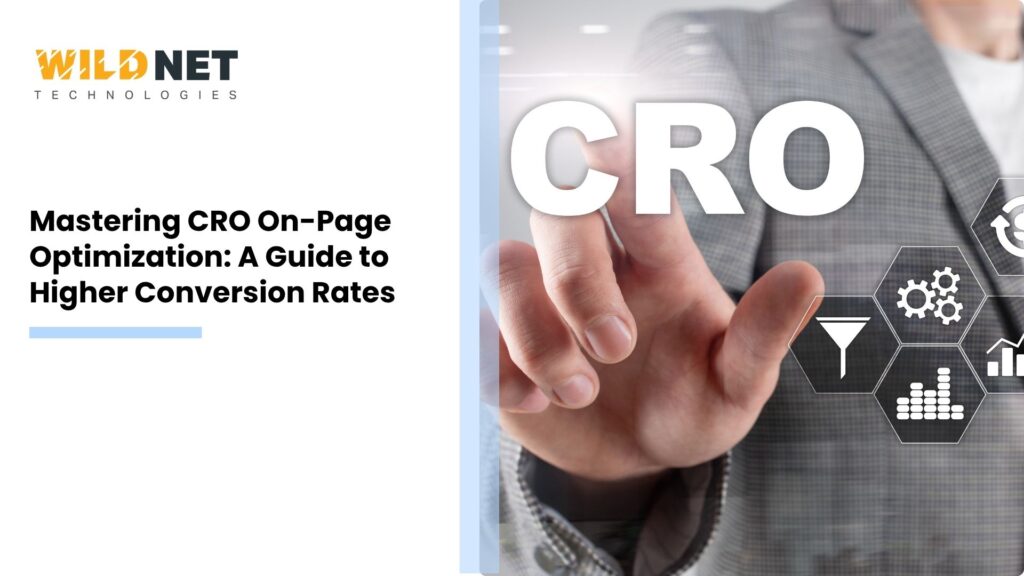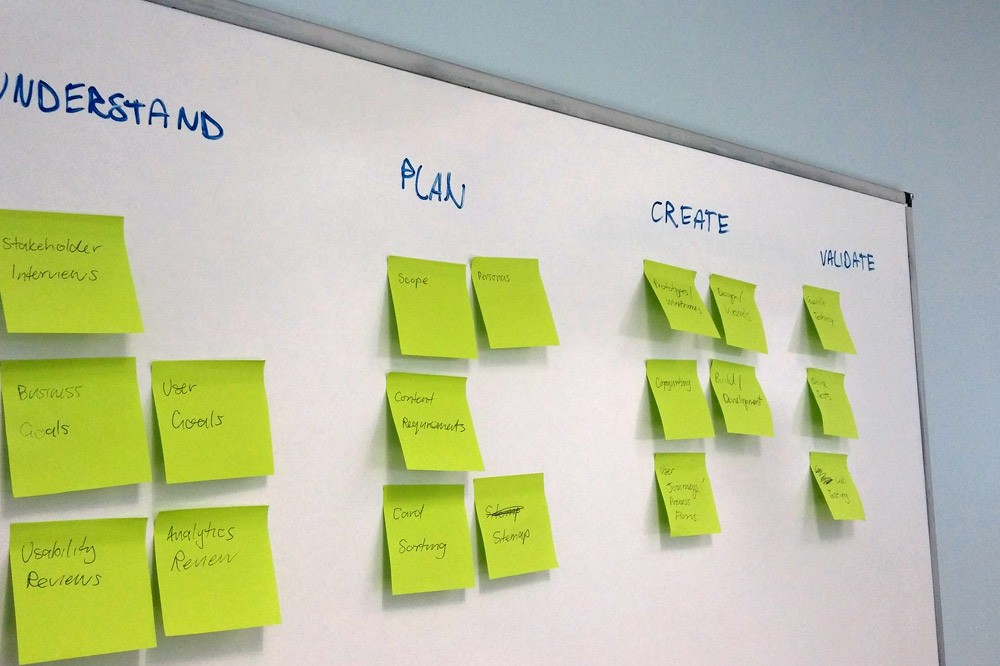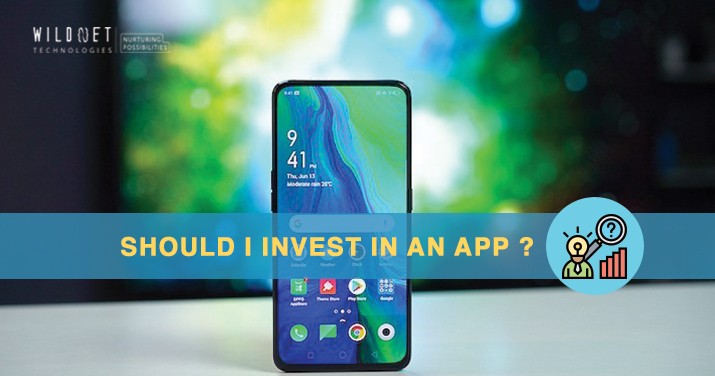Driving traffic to your website is just the beginning. What truly determines digital success is what happens after a visitor arrives. Do they engage with your content? Do they click the call-to-action? Do they convert into a lead or a customer? This is where CRO on-page optimization becomes crucial.
Conversion Rate Optimization (CRO) ensures that the hard-earned traffic your site receives doesn’t go to waste. And when it comes to improving conversions, your website’s on-page elements — from layout to messaging — are the most powerful tools in your arsenal. This blog explores everything you need to know about mastering CRO on-page optimization to boost conversions, increase ROI, and create a seamless user journey that turns visits into meaningful results.
What Is CRO On-Page Optimization?
CRO on-page optimization refers to refining the elements on a webpage to encourage users to take a desired action. This could be anything from signing up for a newsletter to making a purchase. It focuses on optimizing visible elements, such as headlines, images, CTA buttons, form placements, and content structure, as well as technical aspects like load speed and mobile responsiveness.
Unlike broader CRO strategies that may include user journey mapping or multi-channel optimization, on-page CRO focuses on what users see and interact with directly. It’s where design, psychology, and data meet to guide user behavior in a way that aligns with your business goals.
Why CRO On-Page Optimization Matters
In today’s digital economy, attention spans are short, and competition is fierce. Users form opinions about your website in seconds. If your content isn’t compelling, your CTAs aren’t clear, or your page is hard to navigate, potential customers will leave — fast.
Here’s why investing in CRO on-page optimization is essential:
- Maximizes ROI from existing traffic: You’ve already spent time or money (or both) attracting users — now make sure they convert.
- Improves user experience: Well-optimized pages load faster, are easier to navigate, and feel more intuitive.
- Increases customer satisfaction: Clear messaging and easy-to-complete actions make users feel more confident and valued.
Core Elements of CRO On-Page Optimization
To master CRO on-page optimization, focus on refining the following elements on each key page of your website:
1. Headlines That Hook
Your headline is the first thing users see. It needs to be clear, engaging, and relevant to the user’s search intent. A good headline can reduce bounce rates and draw users further into your page content.
2. Clear and Compelling CTAs
Calls-to-action (CTAs) should be visible, action-oriented, and aligned with user intent. Whether it’s “Start Free Trial,” “Get a Quote,” or “Download Now,” the CTA must stand out and offer immediate value.
3. Optimized Page Layout and Design
Page structure should guide the user’s eye naturally through the content. Use white space, bullet points, and section dividers to break up large blocks of text. A clean, scannable layout boosts comprehension and trust.
4. Page Speed and Mobile Responsiveness
Slow load times and poor mobile experience can sabotage conversions. Part of effective CRO on-page optimization is ensuring your site performs smoothly across all devices.
5. Trust Signals and Social Proof
Add testimonials, reviews, client logos, certifications, and security badges to instill confidence in your brand. Users are more likely to convert when they feel they can trust you.
6. Form Design and Placement
Shorter forms generally convert better. Only ask for essential information. Ensure the form is placed where users expect it — typically above the fold or at logical points of decision-making.
7. Interactive Elements
Videos, sliders, pop-ups (used carefully), and interactive demos can boost engagement. Just make sure they don’t interfere with page usability or slow down load speed.
The Role of Data in CRO On-Page Optimization
You can’t optimize what you don’t measure. Effective CRO on-page optimization relies heavily on data and continuous testing.
Use tools like:
- Google Analytics: For tracking behavior flows, bounce rates, and session durations.
- Hotjar or Crazy Egg: To monitor heatmaps and session recordings.
- A/B Testing Tools (e.g., Optimizely, VWO): To experiment with different page versions and discover what works best.
Data lets you identify friction points, understand user intent, and make informed design decisions rather than relying on guesswork.
Best Practices for Effective CRO On-Page Optimization
Here are some tried-and-true strategies for implementing CRO on-page optimization effectively:
1. Focus on Intent-Driven Content
Every visitor comes to your page with a purpose. Understand the intent and align your content to address it effectively. Whether informational, transactional, or navigational, your content should meet the visitor where they are in the funnel.
2. Use Visual Hierarchy
Ensure the most essential information is immediately visible. Use larger fonts for key points, contrasting colors for call-to-action (CTA) elements, and directional cues like arrows or images to guide users naturally.
3. Reduce Distractions
Remove unnecessary links, pop-ups, or autoplay videos that could distract users from completing the desired action. The more streamlined your page, the better the user focus.
4. Make Navigation Seamless
Clear menus, breadcrumbs, and intuitive navigation structures reduce confusion and keep users moving toward conversion goals.
5. Continually Test and Iterate
Even after optimization, user behavior can change over time. Stay on top of trends and test new layouts, messages, or visuals periodically to maintain high conversion rates.
Common Mistakes in CRO On-Page Optimization
Avoiding common pitfalls is just as crucial as applying best practices:
- Overloading with CTAs: More isn’t better. Focus on one or two high-impact actions.
- Ignoring mobile users: A page that looks great on desktop but breaks on mobile can tank your conversions.
- Skipping analytics: If you’re not measuring performance, you’re not optimizing — you’re guessing.
- Cluttered design: A busy page overwhelms users. Keep it clean and focused.
Integrating CRO On-Page Optimization with Your SEO Strategy
A powerful digital marketing strategy doesn’t separate SEO from CRO — it blends them into a cohesive framework that maximizes both traffic and conversions. SEO focuses on attracting qualified visitors through search engines by targeting high-intent keywords, optimizing content, and improving site structure. CRO, on the other hand, ensures that once users arrive, they are guided smoothly toward taking meaningful actions such as signing up, purchasing, or contacting your business.
When your pages are optimized for both visibility and conversion, your marketing becomes exponentially more effective. SEO brings in the right audience — those who are actively looking for what you offer — while CRO ensures those visitors have a seamless, persuasive experience that turns interest into results. The synergy between SEO and CRO allows you to make the most of every visitor by not only increasing the quantity of traffic but also improving the quality of outcomes.
This integration also supports smarter use of marketing budgets, stronger user engagement, better content performance, and data-driven refinement. Instead of working in silos, your efforts become aligned, leading to a holistic digital presence that performs consistently across all stages of the customer journey.
For instance:
- Use keyword research to shape your content.
- Optimize meta titles and descriptions to attract relevant users.
- Ensure fast load speeds and mobile optimization for better SEO rankings and user experience.
- Build pages that don’t just rank — they convert.
This synergy creates a loop: SEO drives qualified traffic, and CRO on-page optimization ensures that traffic turns into business results. Together, they help you dominate search engines while increasing conversions.
FAQ: Mastering CRO On-Page Optimization
Q1: What is CRO on-page optimization?
CRO on-page optimization is the process of enhancing individual webpage elements, such as headlines, CTAs, forms, and layout, to increase the likelihood that users will take a desired action, like making a purchase or submitting a form.
Q2: How does CRO on-page optimization impact ROI?
By making each page more effective at converting visitors, CRO on-page optimization increases the return on investment from your traffic sources, improving the efficiency of your overall marketing spend.
Q3: Can CRO on-page optimization affect my SEO rankings?
Yes. Several key aspects of CRO, including improving page load speed, reducing bounce rates, and enhancing user engagement, can have a positive impact on SEO rankings.
Q4: How often should I update my CRO on-page optimization strategy?
Optimization should be an ongoing process. Review key metrics monthly and conduct A/B testing regularly to stay aligned with changing user behavior and business goals.
Q5: What tools can I use for CRO on-page optimization?
Popular tools include Google Analytics, Hotjar, Crazy Egg for behavior tracking, and Optimizely or VWO for A/B testing and experimentation.
Conclusion
In a digital world where user attention is fleeting and competition is high, refining your website for conversions isn’t optional — it’s essential. CRO on-page optimization enables your business to convert casual visitors into loyal customers by optimizing every element of the user experience. When combined with robust SEO services, you create a performance-driven ecosystem that not only brings traffic to your site but ensures that traffic contributes to your bottom line. The future of digital success lies in the seamless integration of strategy, user behavior, and data, with CRO on-page optimization at its heart.
Read More
On-Page SEO vs Off-Page SEO: Key Differences & Best Practices
Which On-Page Element Carries The Most Weight For SEO?






